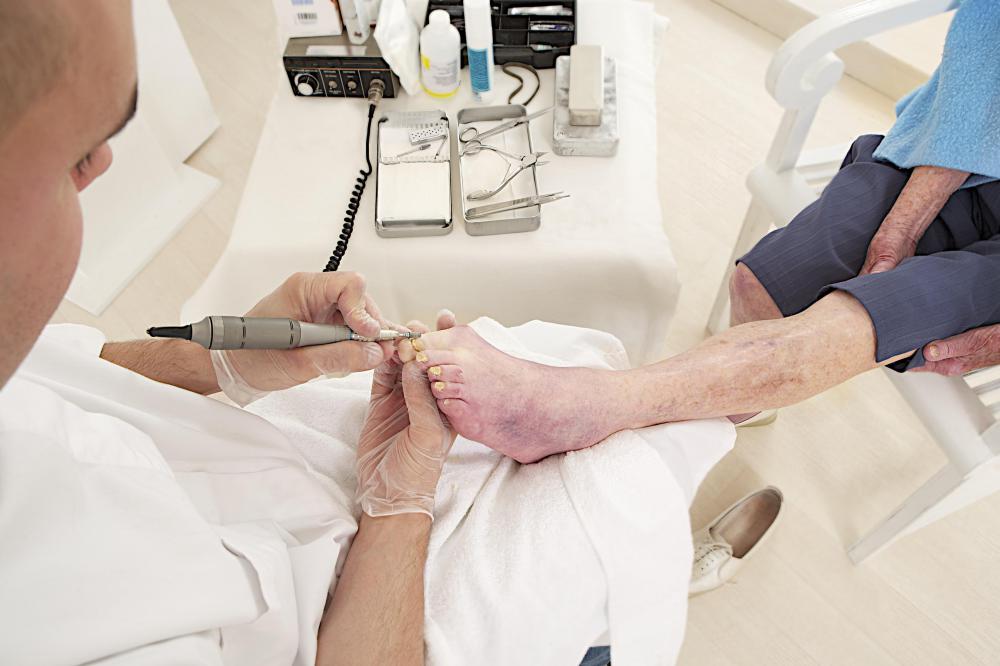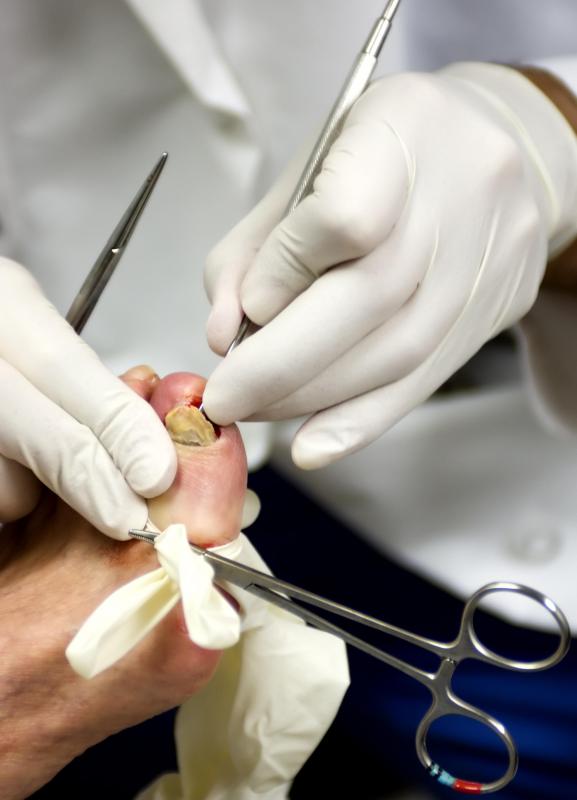At WiseGEEK, we're committed to delivering accurate, trustworthy information. Our expert-authored content is rigorously fact-checked and sourced from credible authorities. Discover how we uphold the highest standards in providing you with reliable knowledge.
What Should I Expect from a Podiatry Residency?
There are four things to expect from a podiatry residency: hands-on experience, lecture series, grand rounds, and daily reports. A medical residency is part of the training required to become a doctor. Students are required to work in a hospital environment in their area of specialty, as part of their training program.
A podiatrist is a doctor who, in most cases, has attended a podiatric medical program, and specializes in the foot and ankle. As part of standard podiatry residency, the student is expected to rotate through all the related departments in the hospital. The options available during the rotation depend on what is available at that particular hospital. This is an important thing to check when looking to select the best medical school.

Hands-on experience during a podiatry residency includes direct contact with patients, assisting during surgery in the first year, and then performing multiple surgeries in the remaining years of the residency. The medical school is responsible for arranging the residency schedule, so the student has time in each of the departments, gaining the skills necessary to be certified as a podiatrist.

During a residency, there are lectures scheduled at least twice a month, to which all medical residents or students are required to attend. These lectures are held either at the university or in the hospital itself. The lecture subjects may include special cases, areas of concern, guest lecturers, or related experts.
Grand rounds are scheduled each day, and the residents are required to attend. During the round, the lead resident discusses the specifics of each case, allowing students to learn from the experiences of other students. In the more senior years, the students themselves are called on to present the case details to the group, advise them of the issues, and discuss the treatment plan.

Students are scheduled to work very long shifts in the hospital, often running two or three days without a break. At the end of each day, they are required to submit a daily report of activity, issues, and events to the lead resident. This person is responsible for supervising the students in the podiatry residency program and ensuring that patient care is not compromised.

Medical residency is part of the traditional physician training program. The intensity of the program is designed to test mental resiliency, ability to work under pressure, and crisis management skills. In recent years, there has been a movement to limit the number of hours without a 12-hour break to no more than 36 continuous hours. This is the result of several high-profile studies that show medical decisions were impaired due to lack of sleep.
AS FEATURED ON:
AS FEATURED ON:

















Discuss this Article
Post your comments